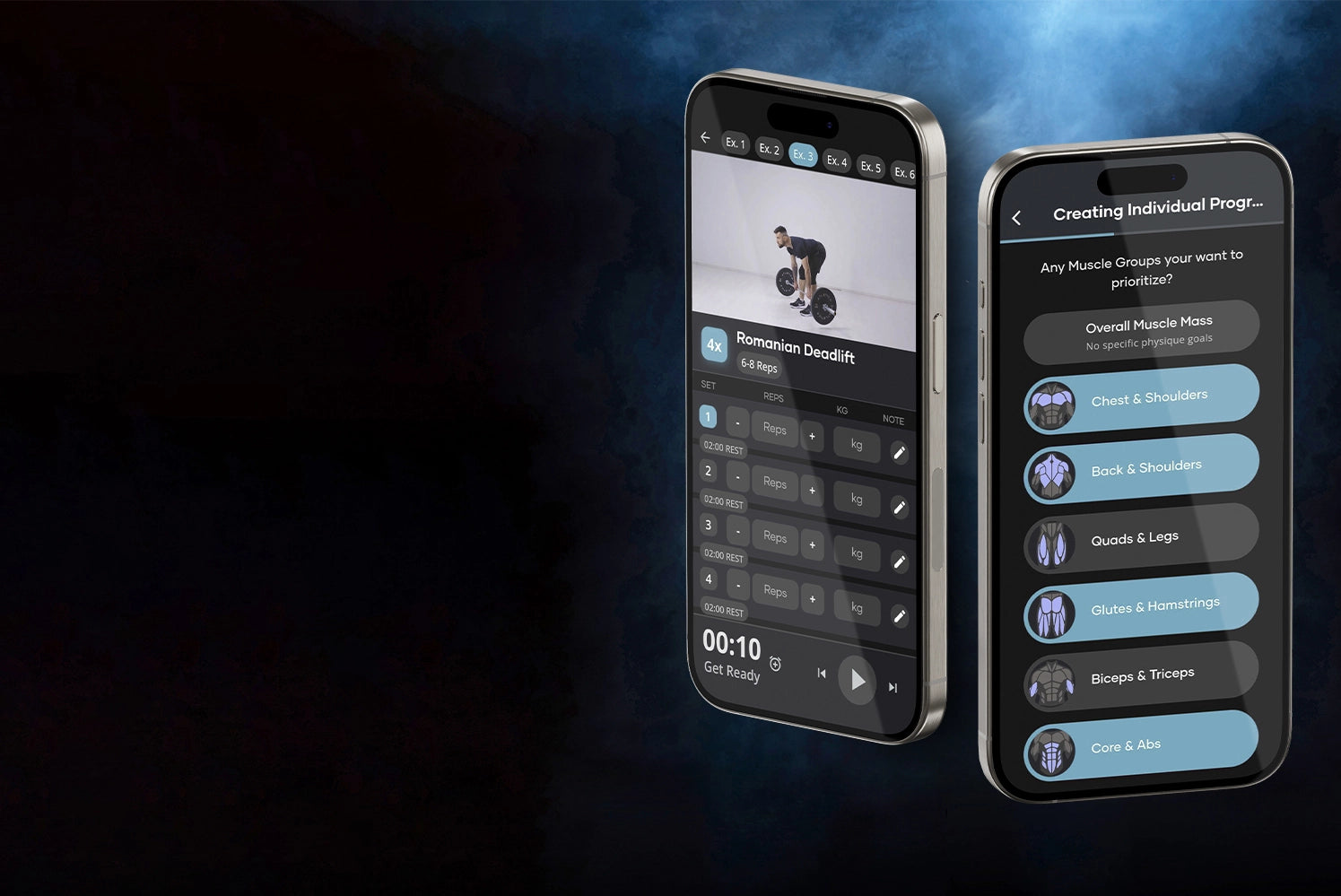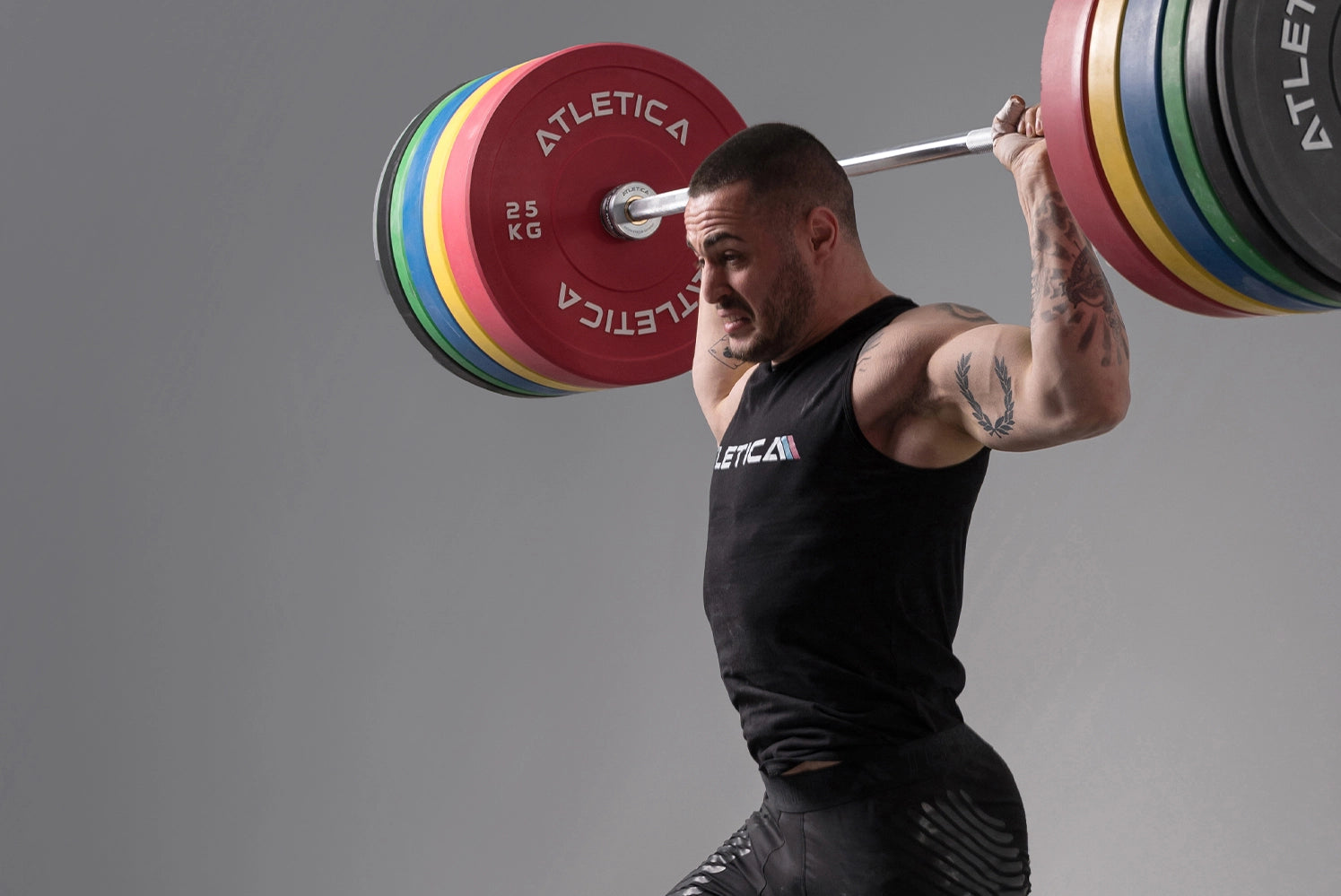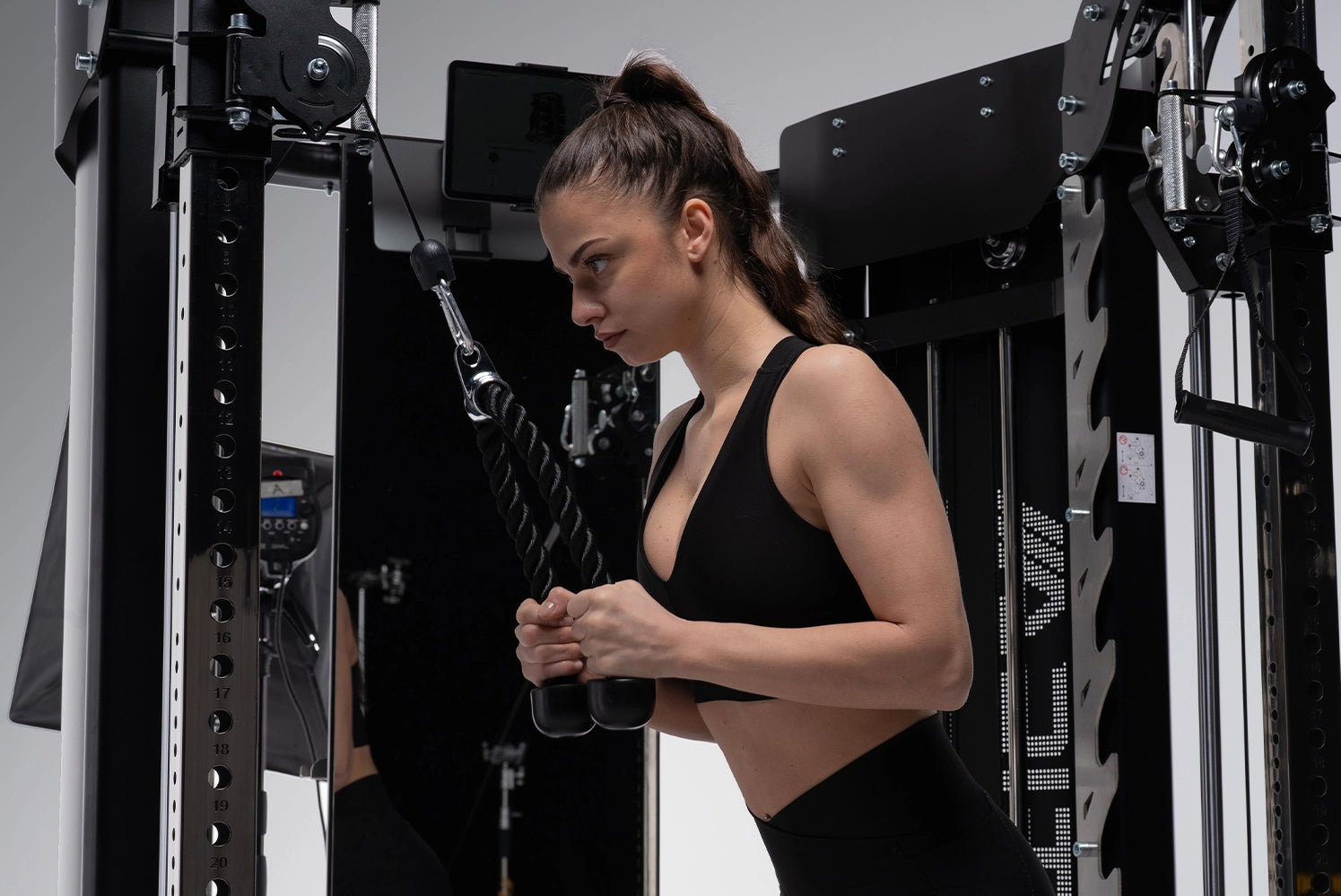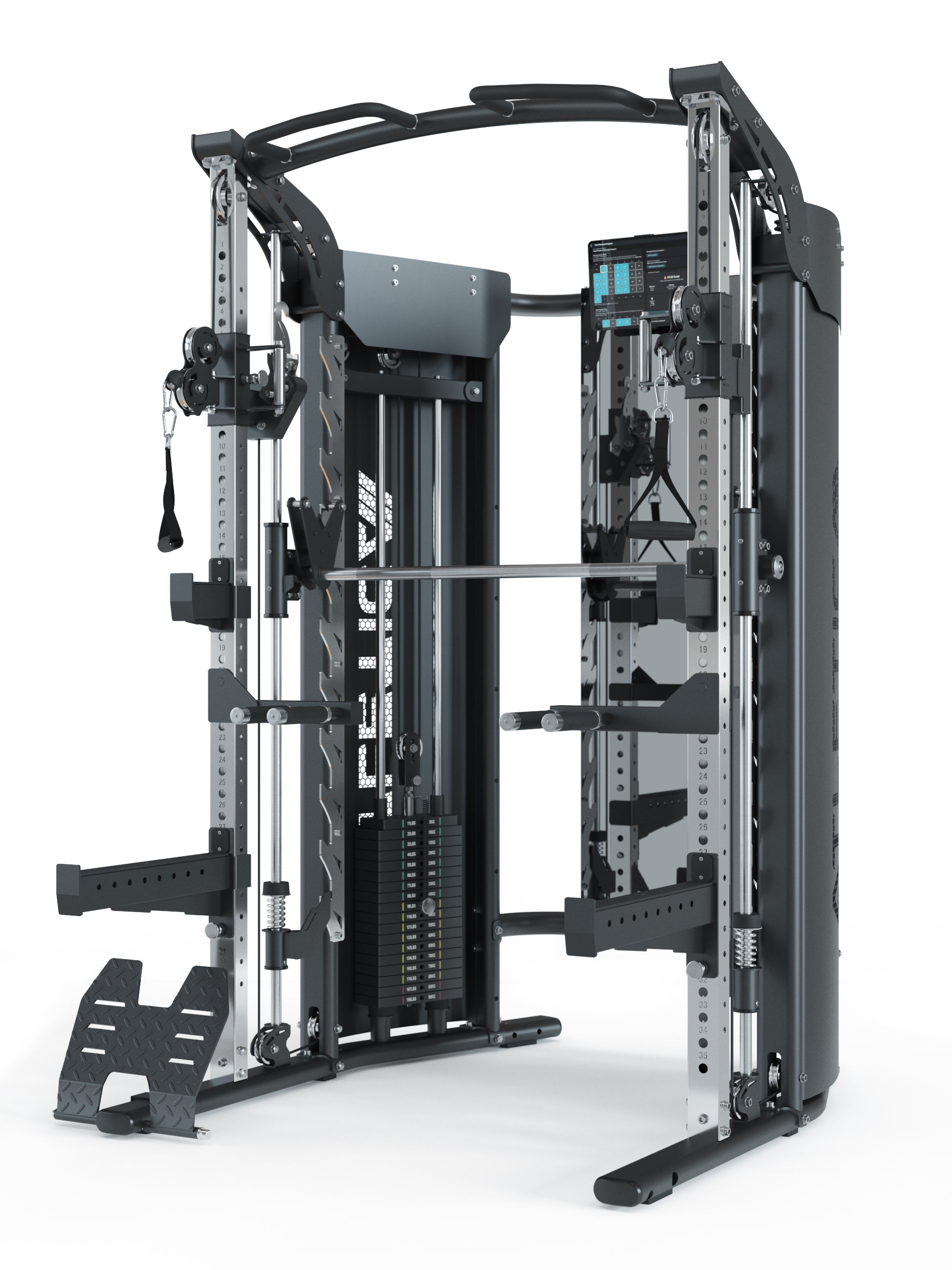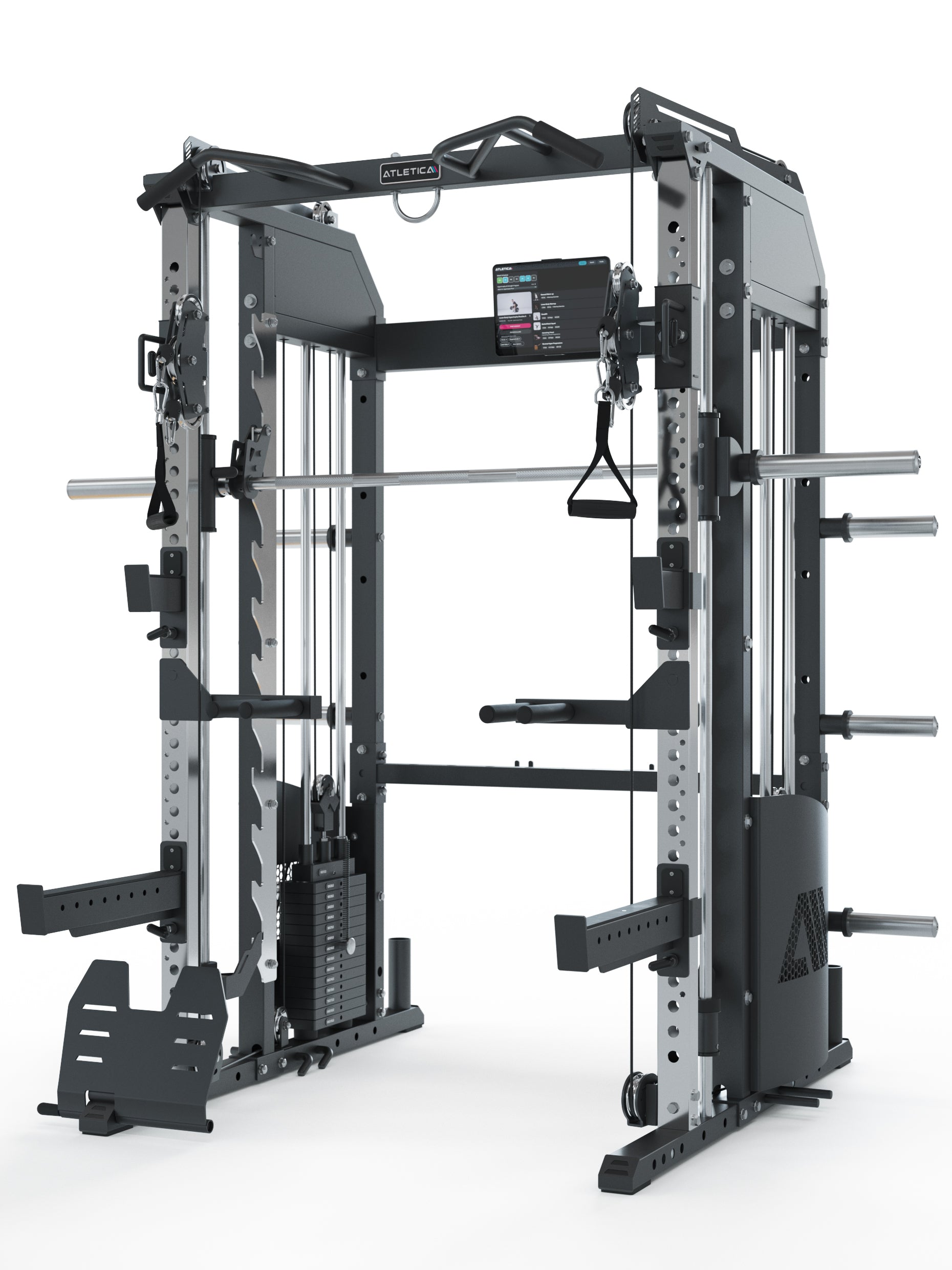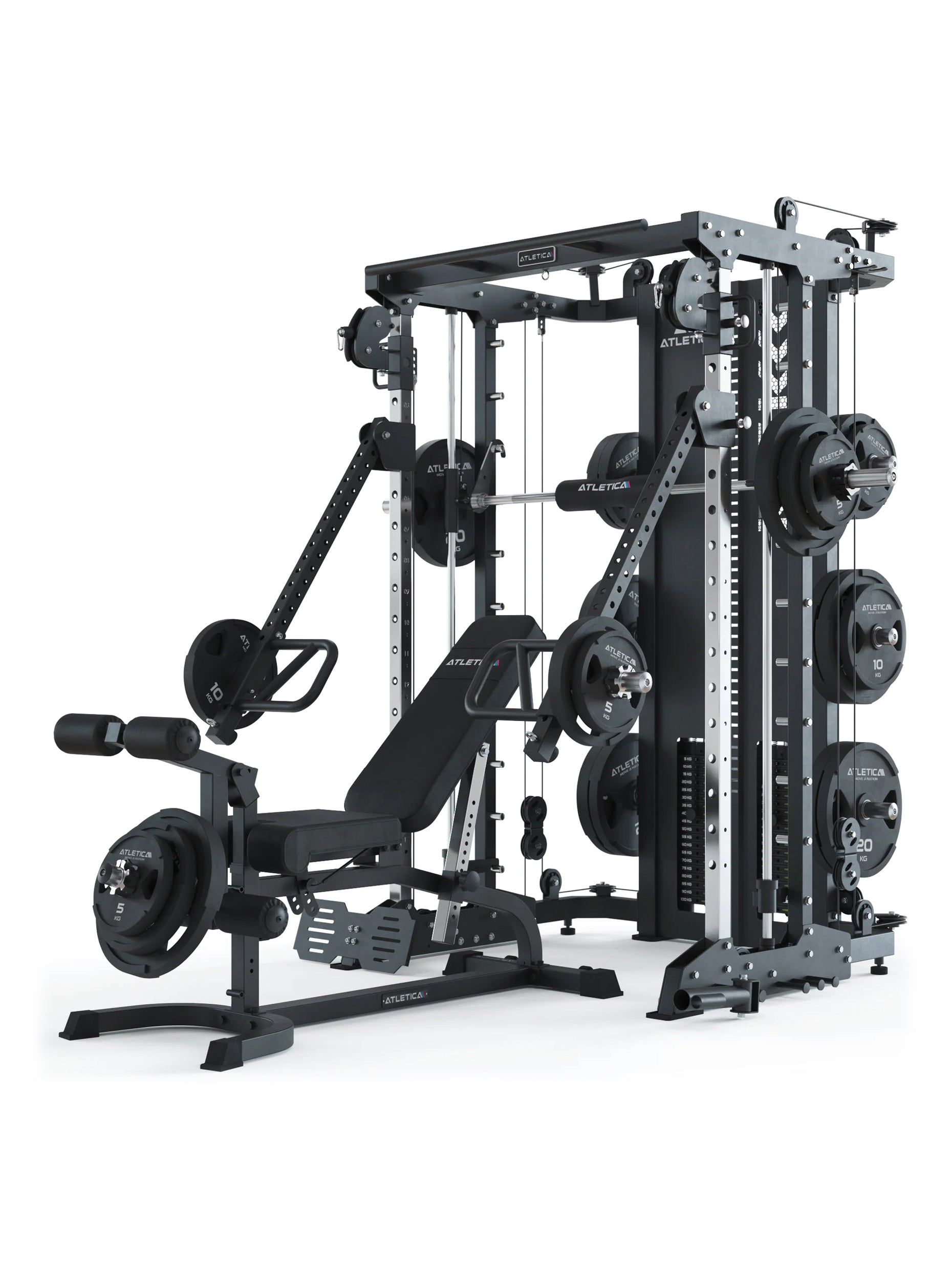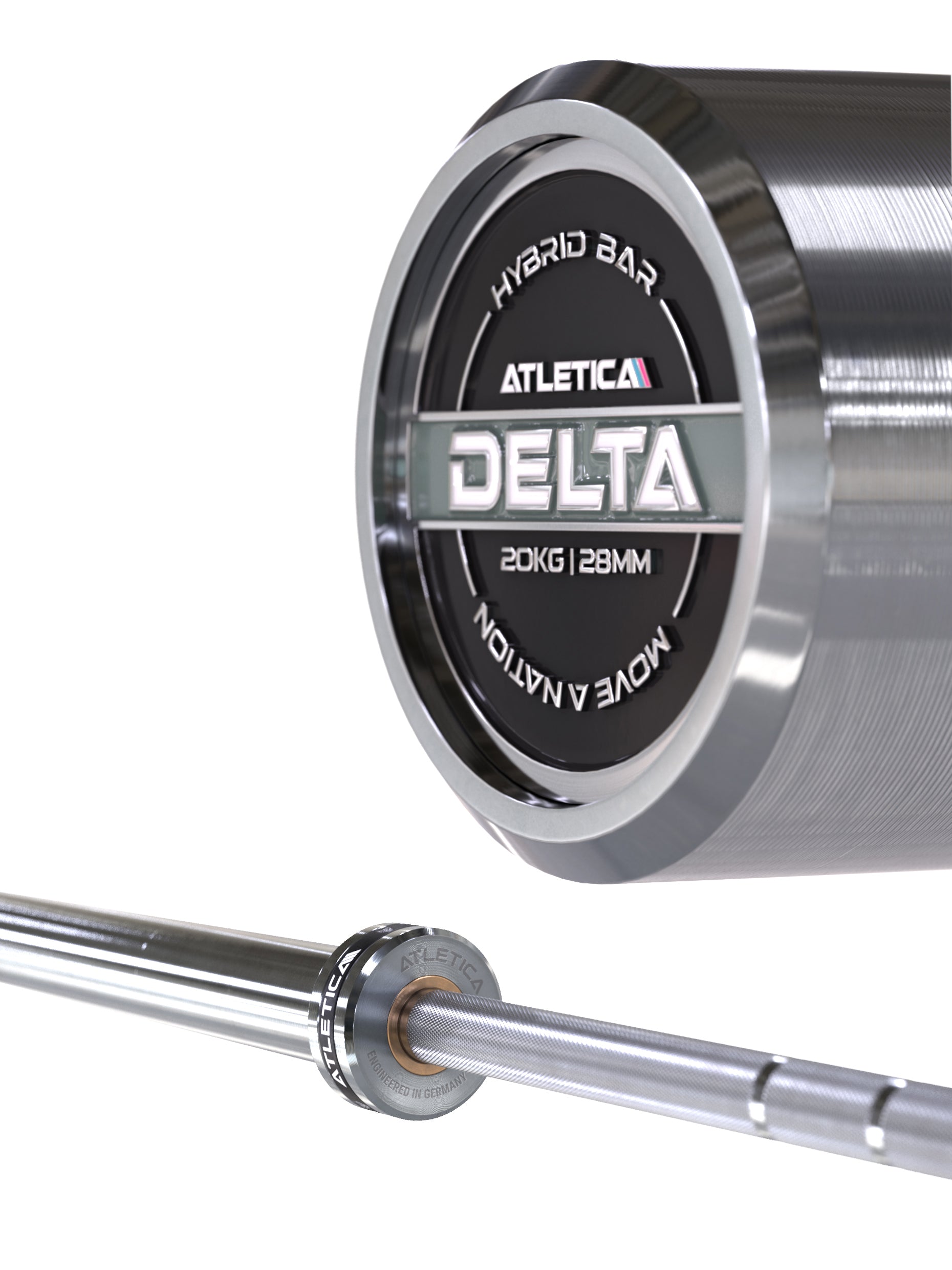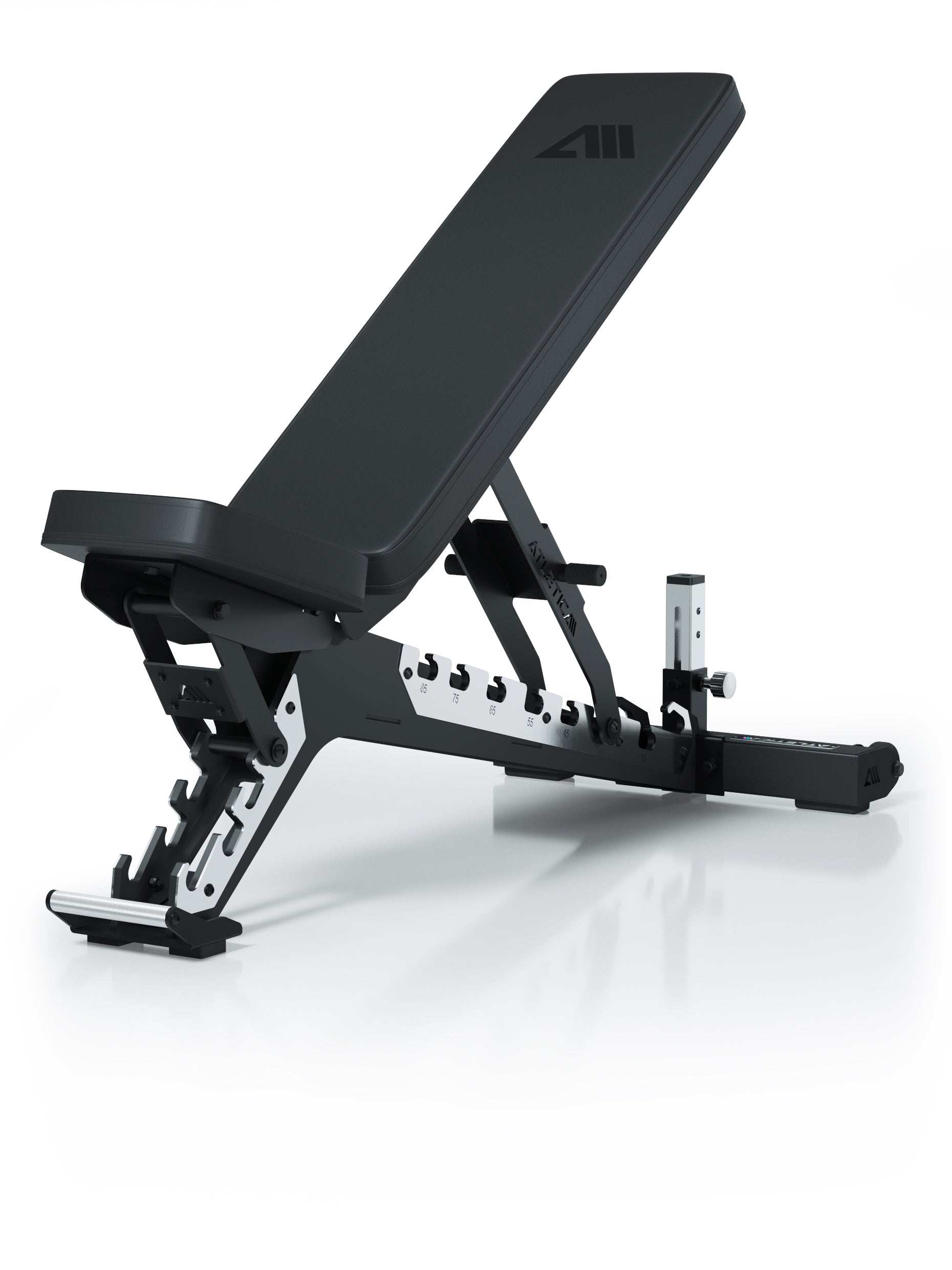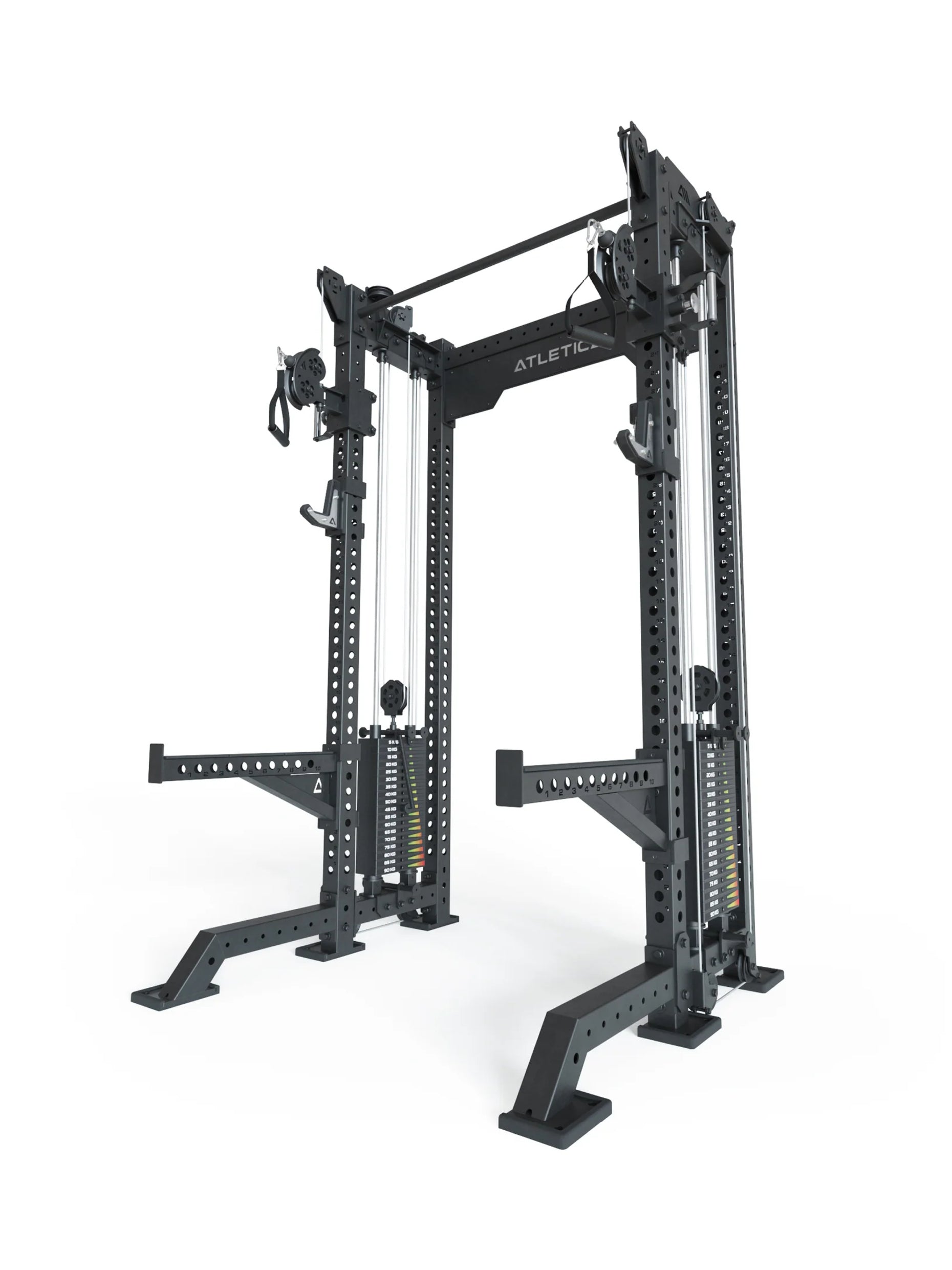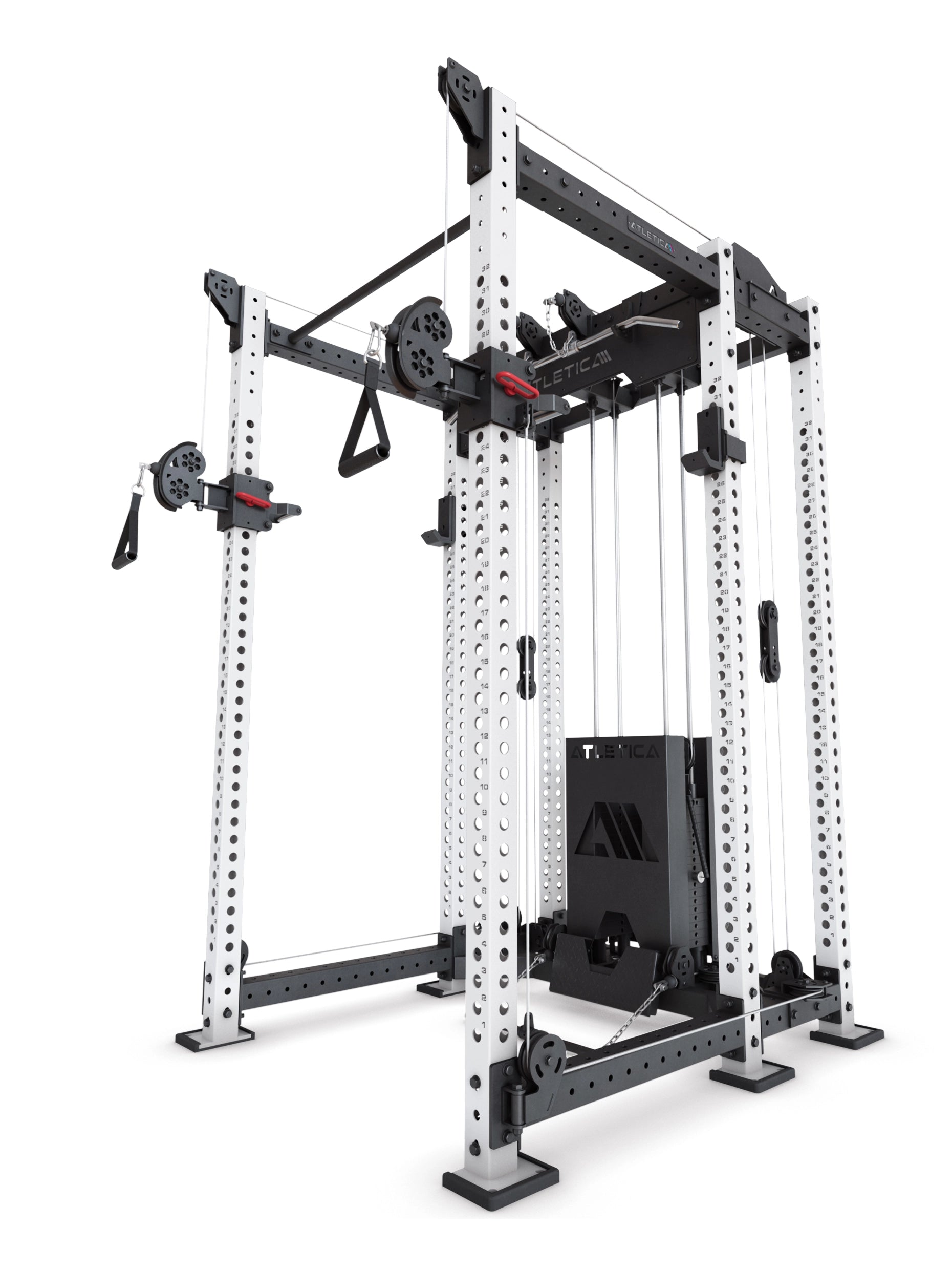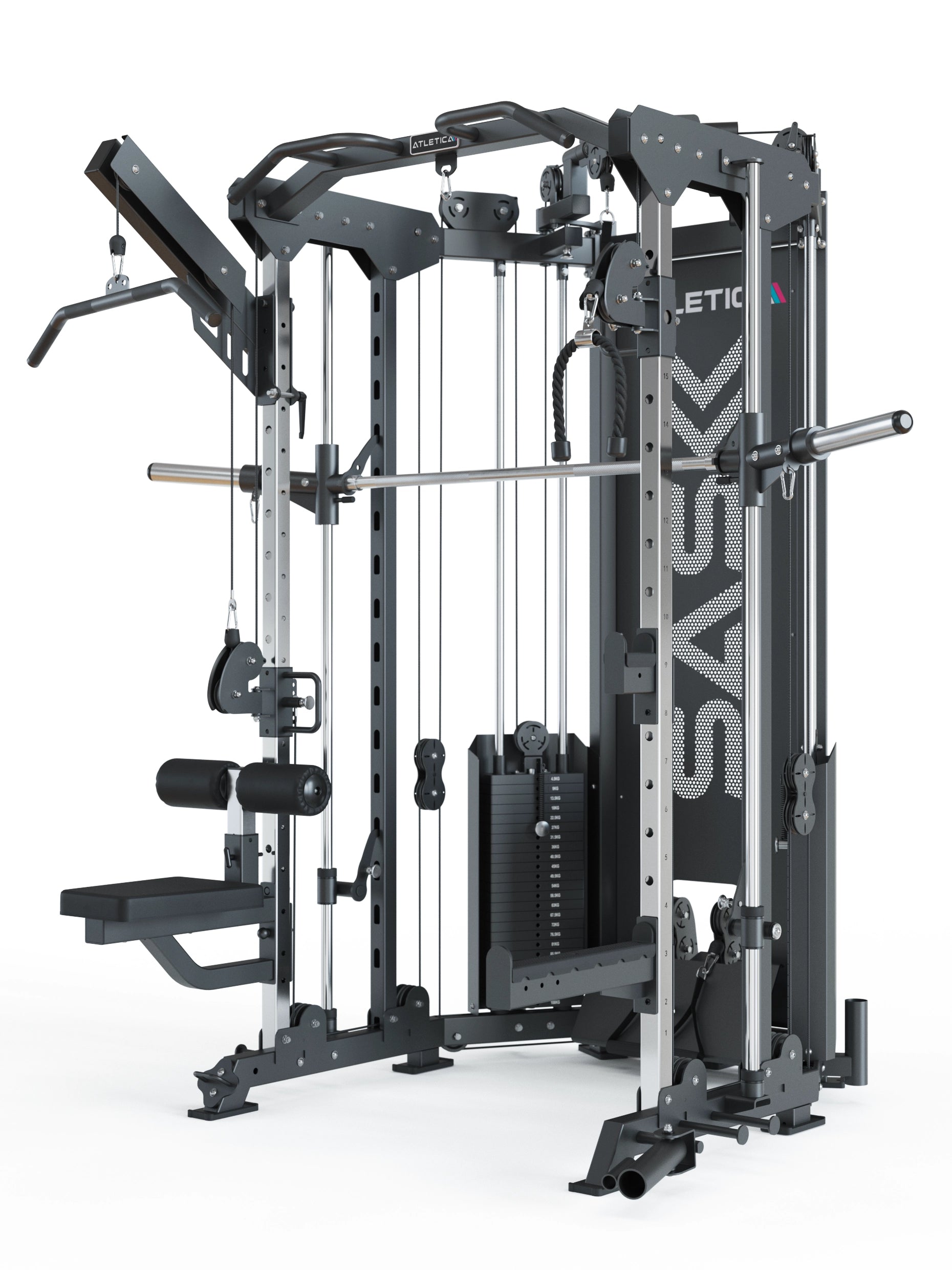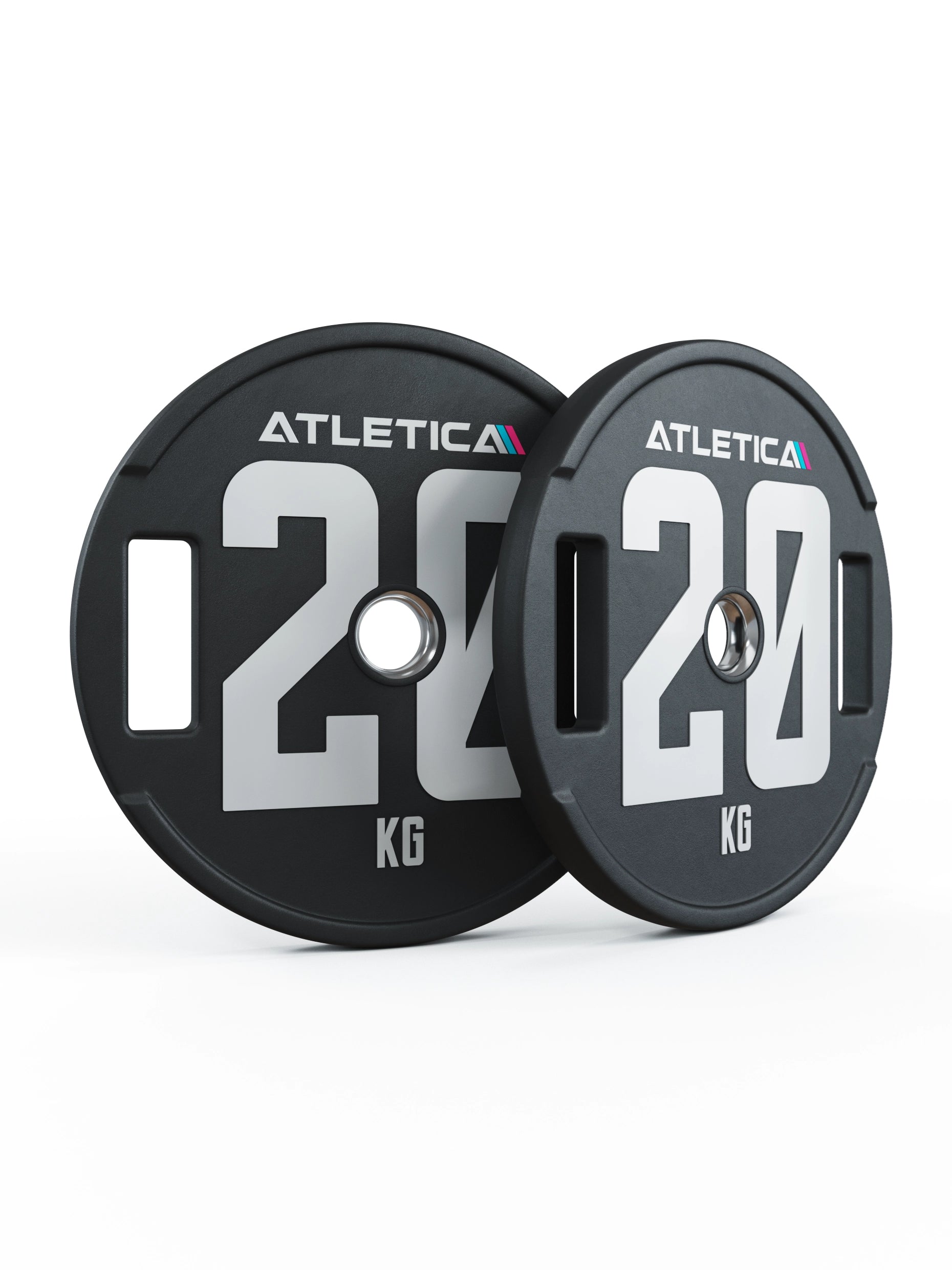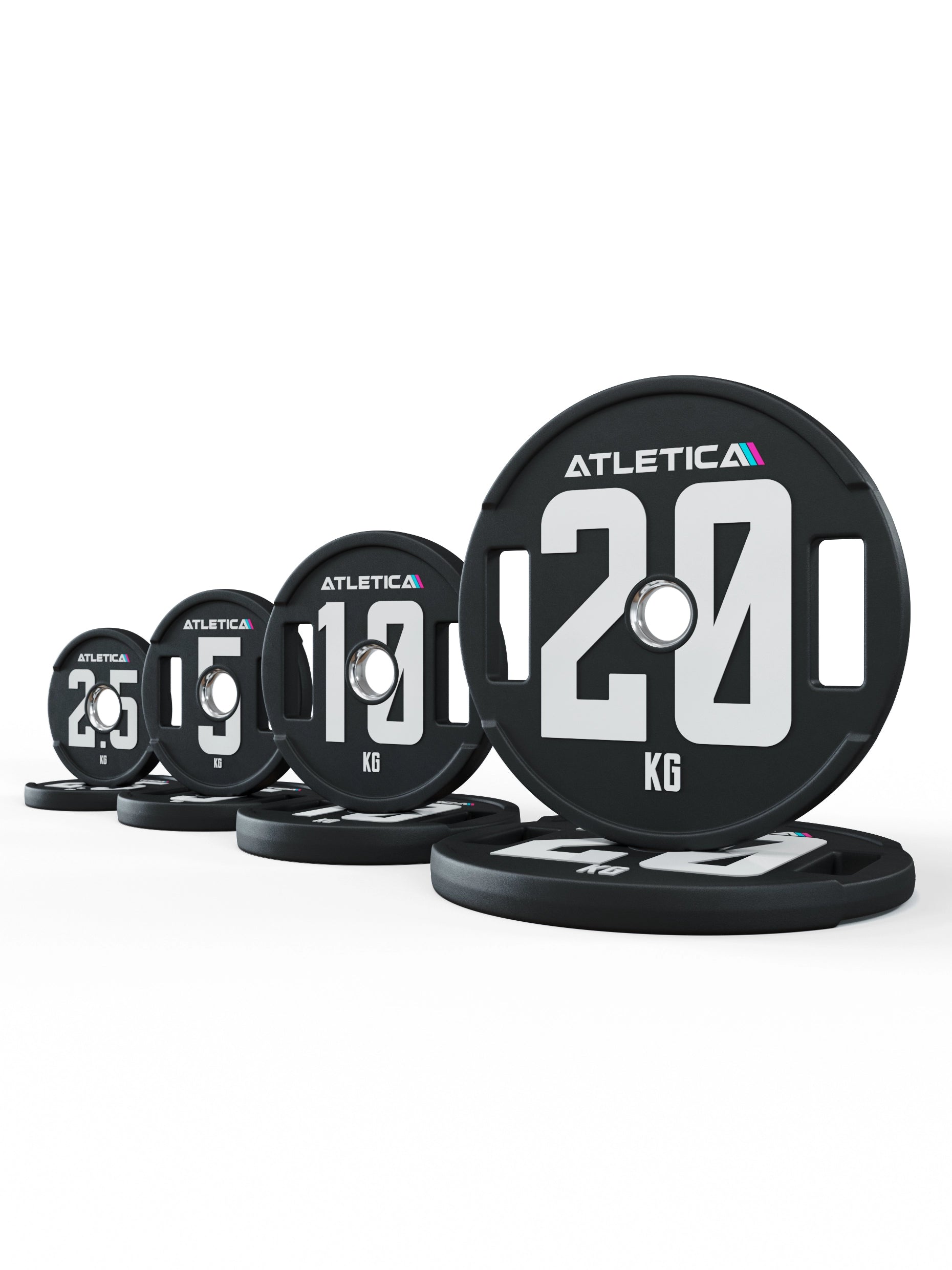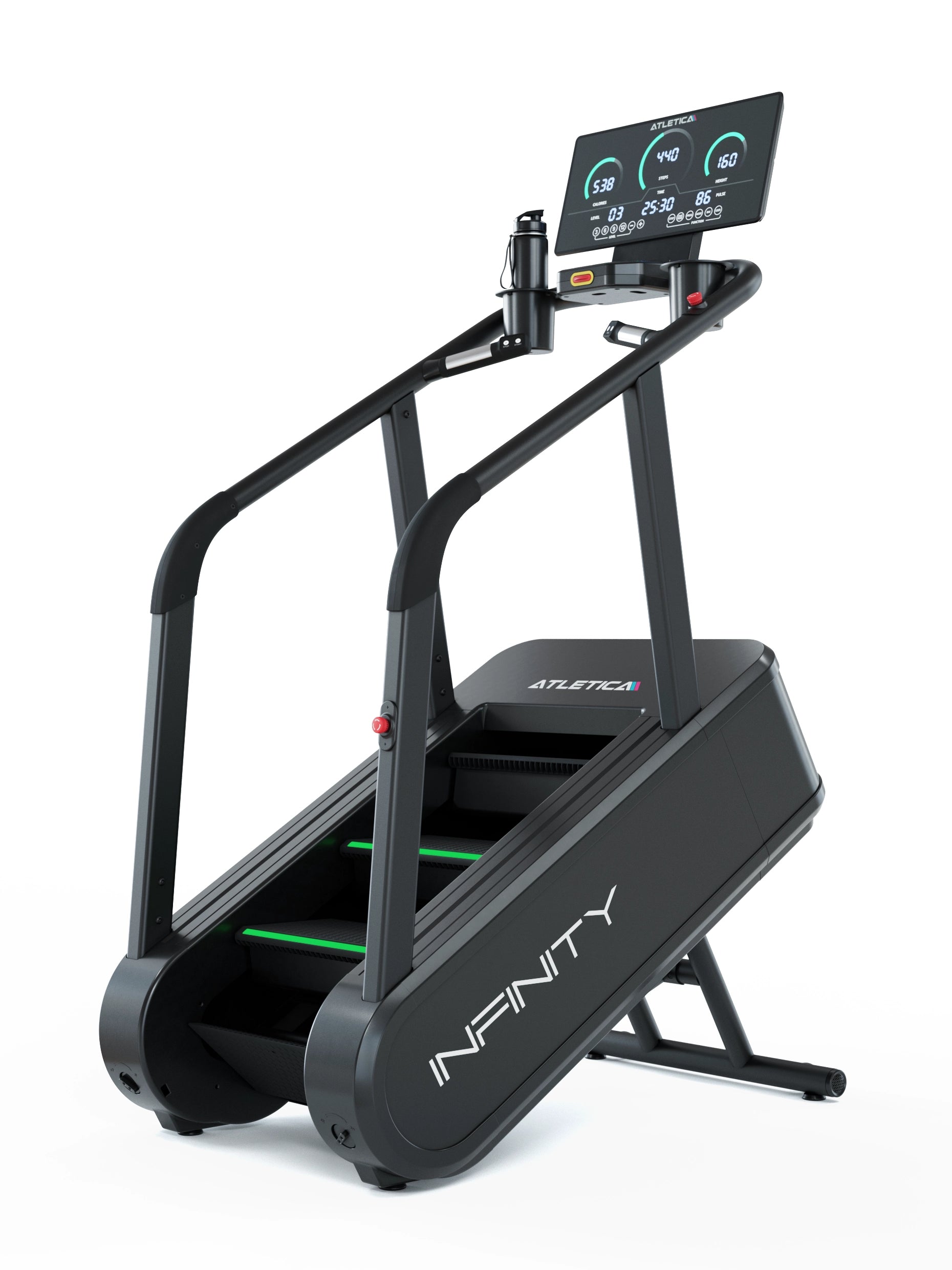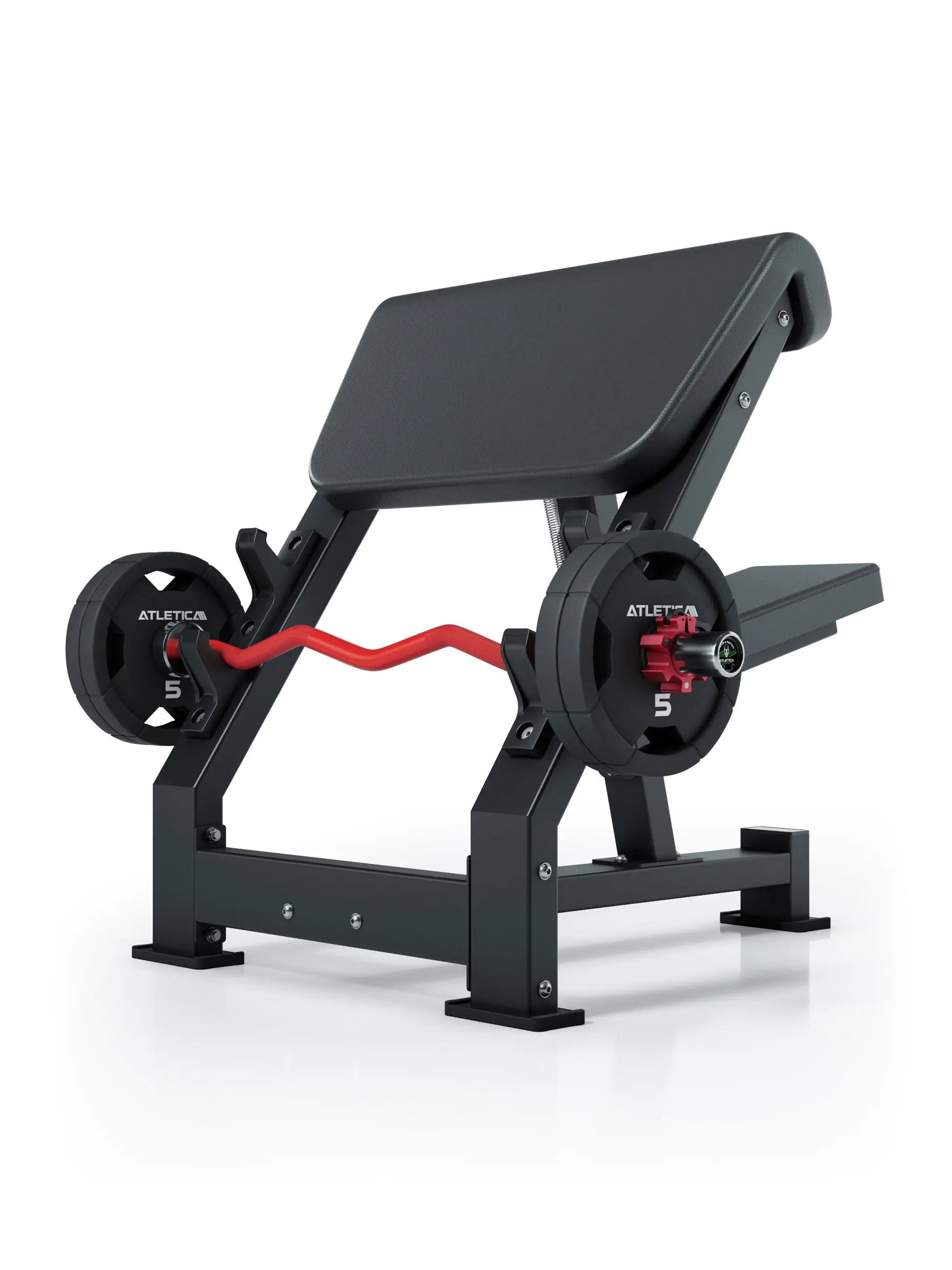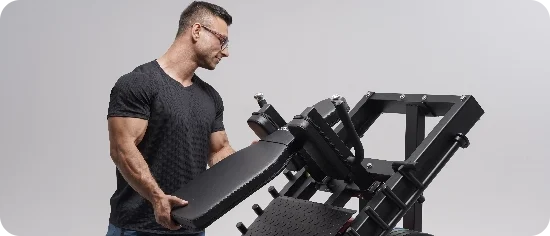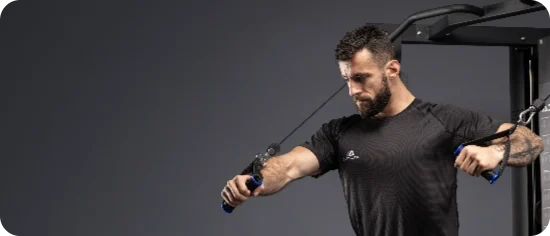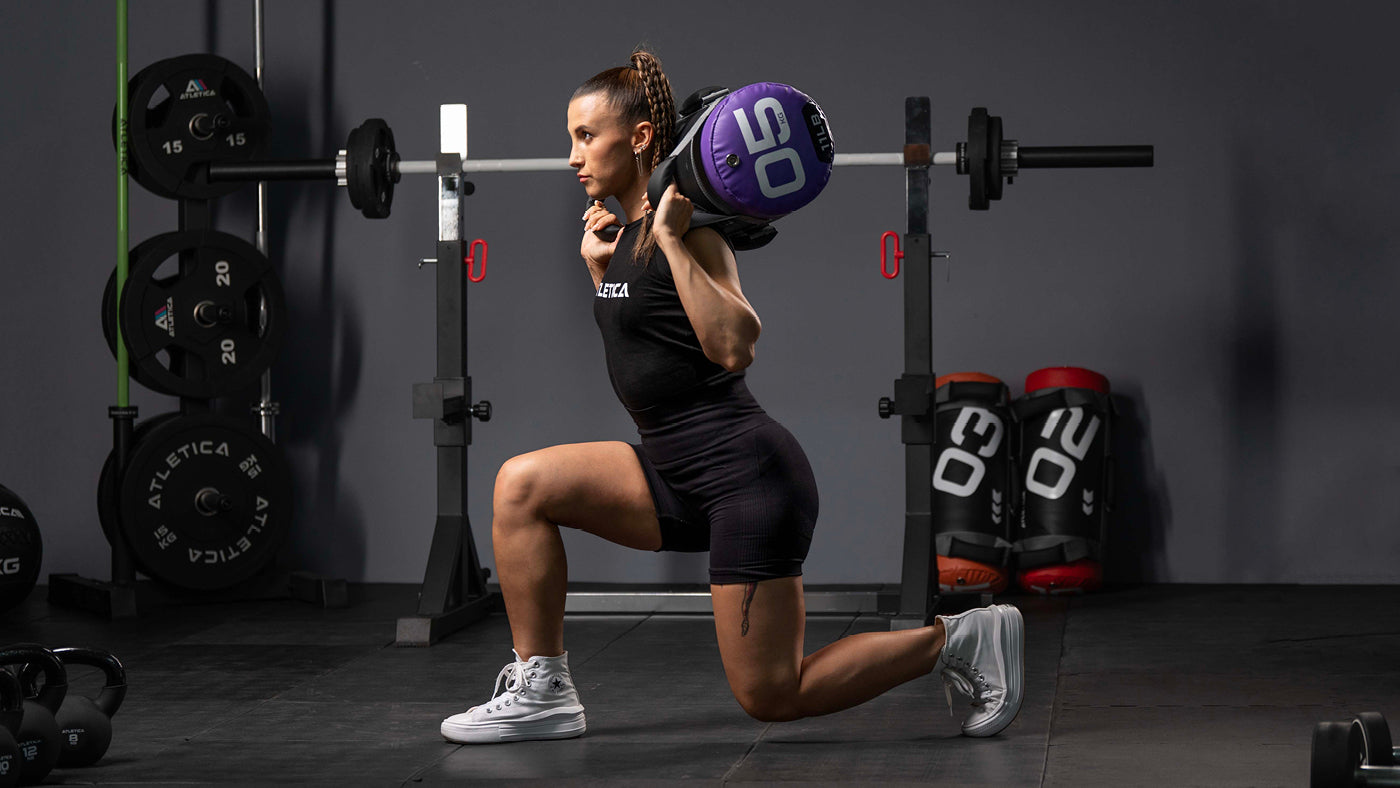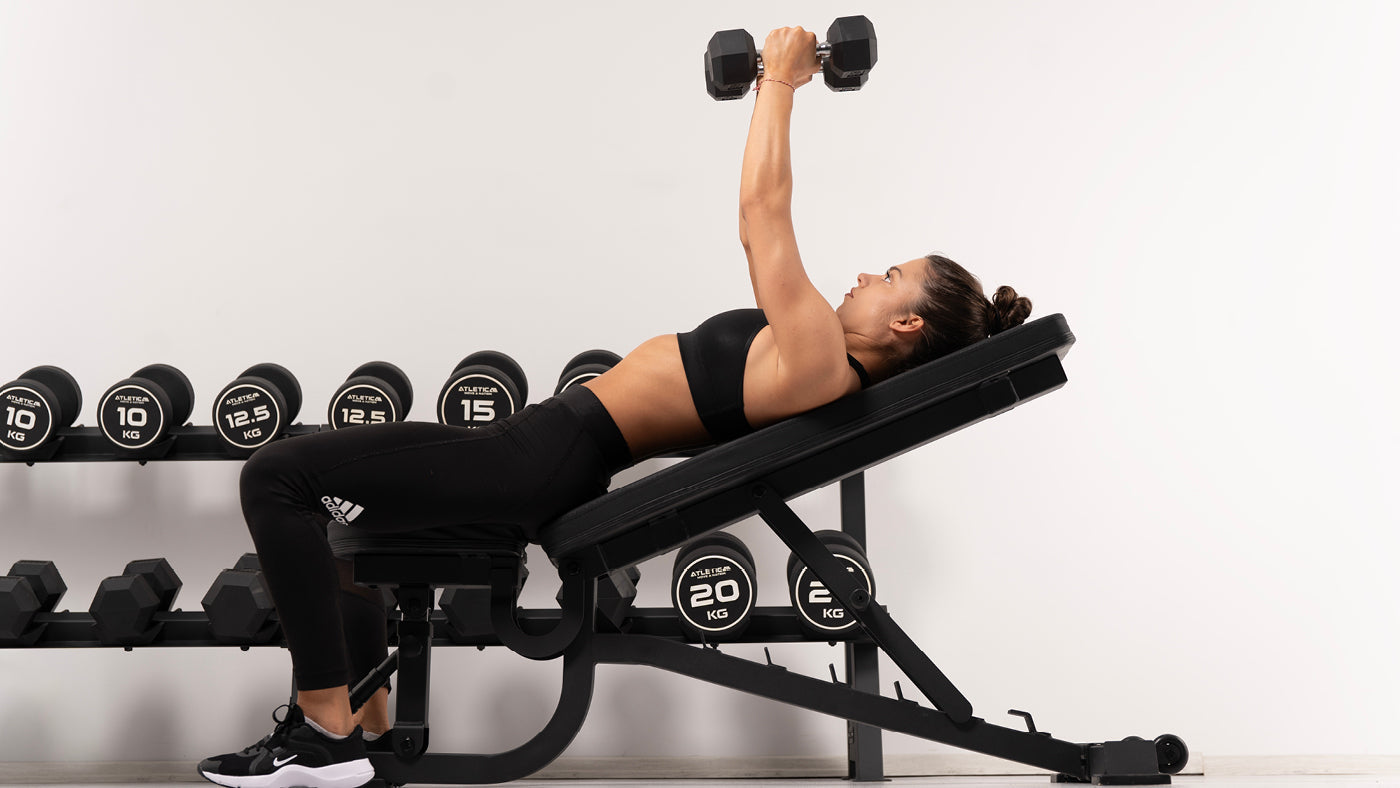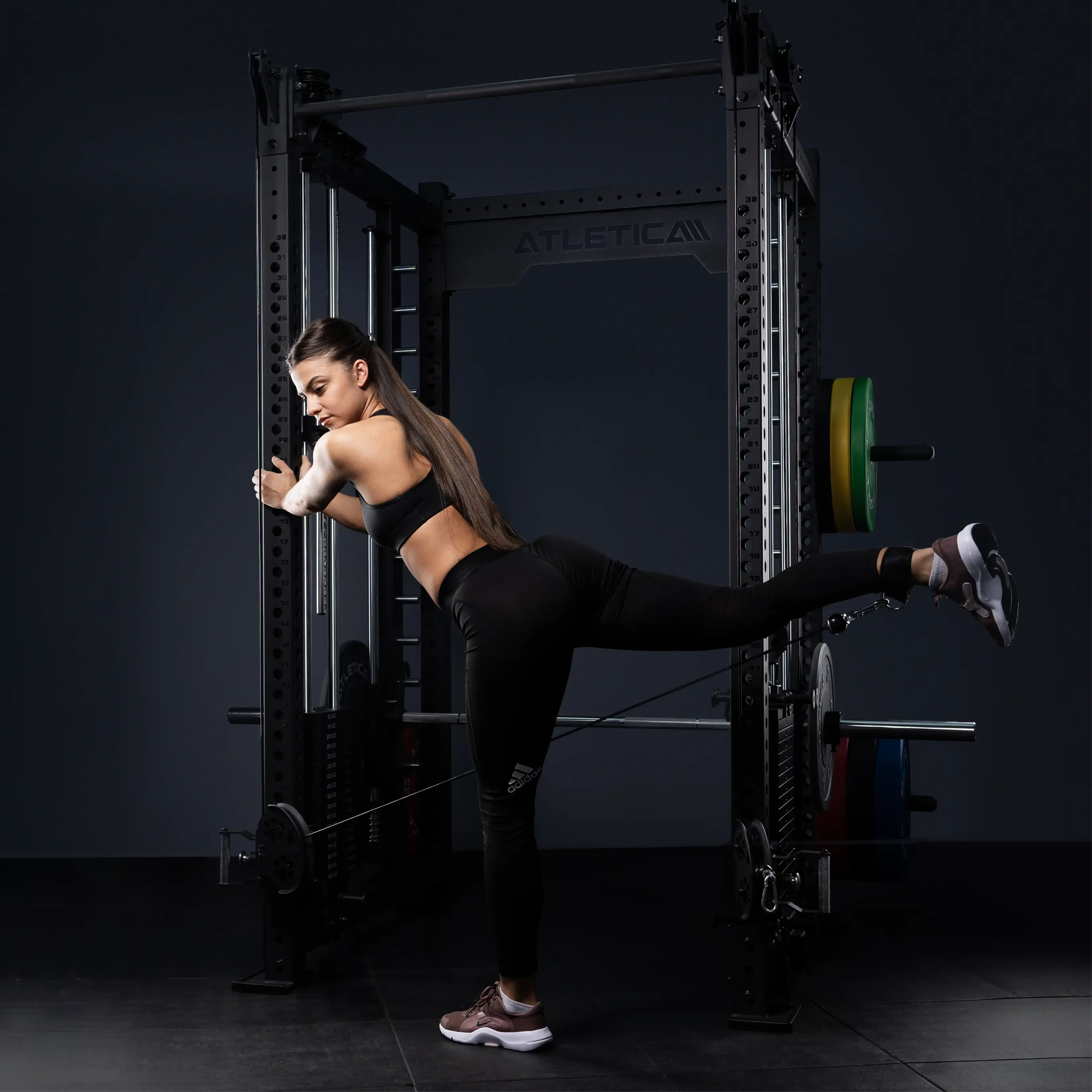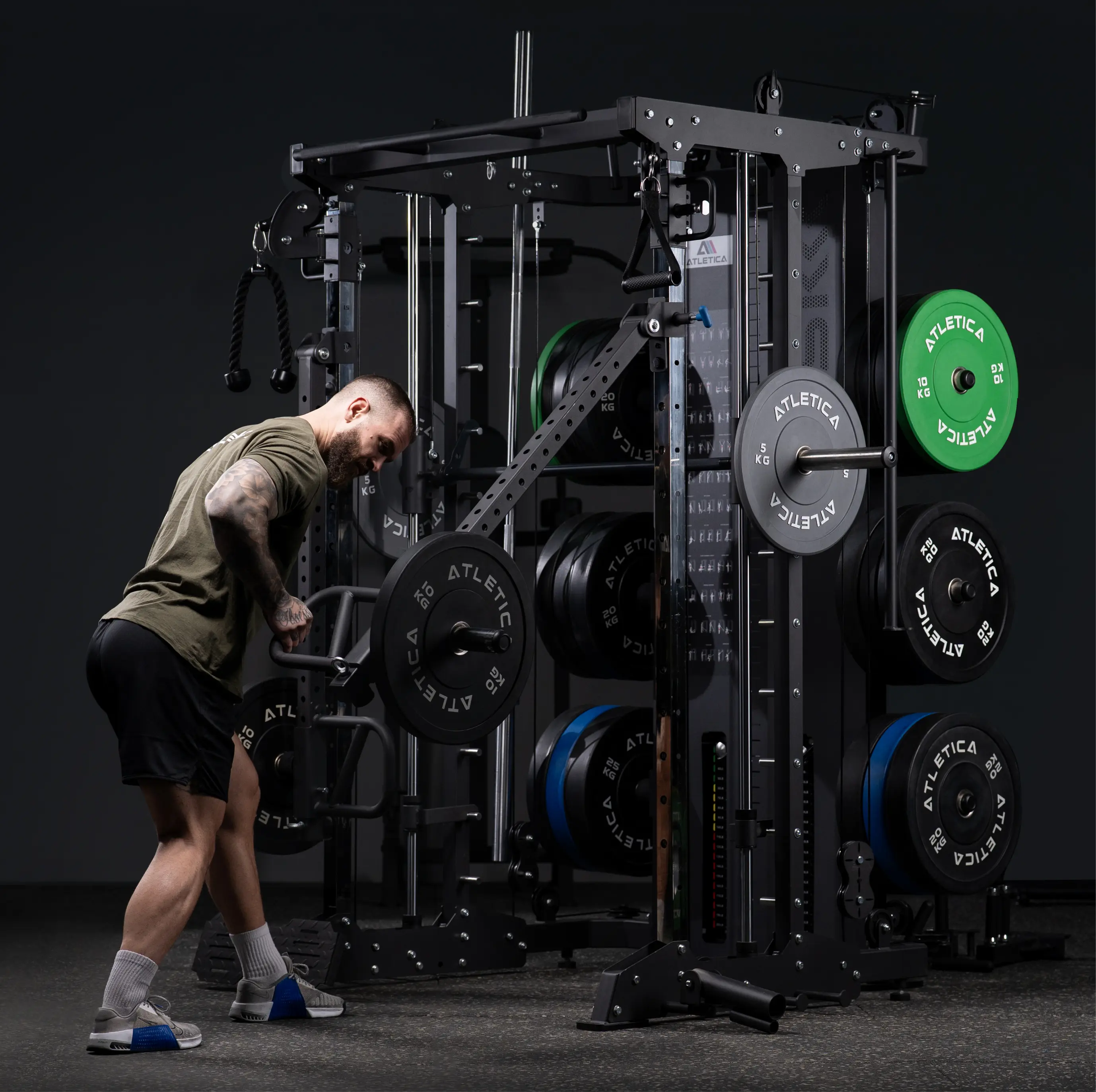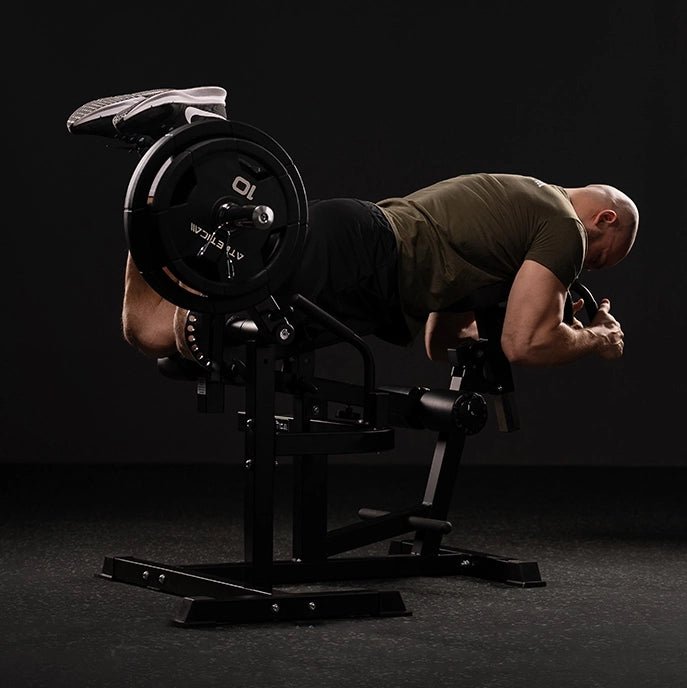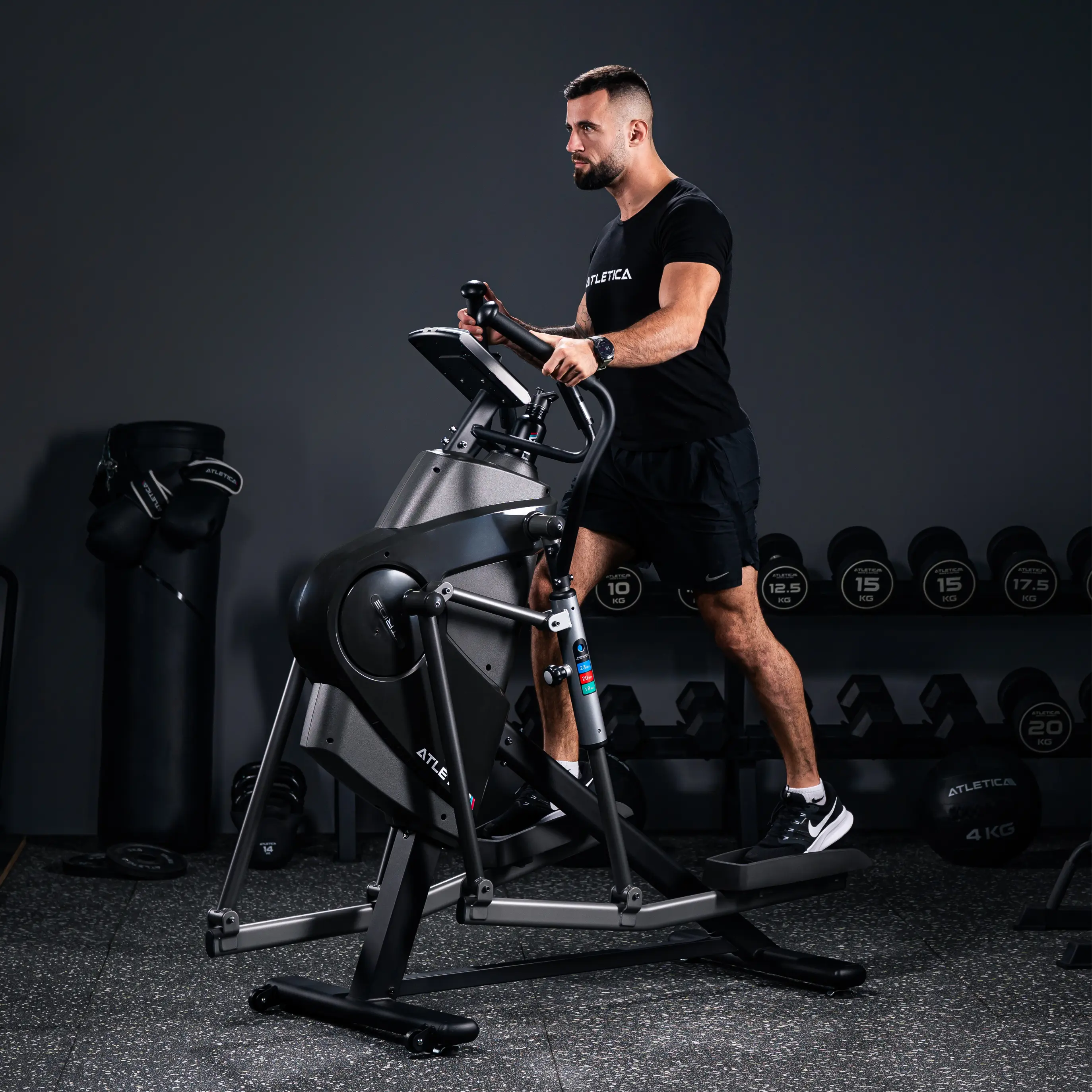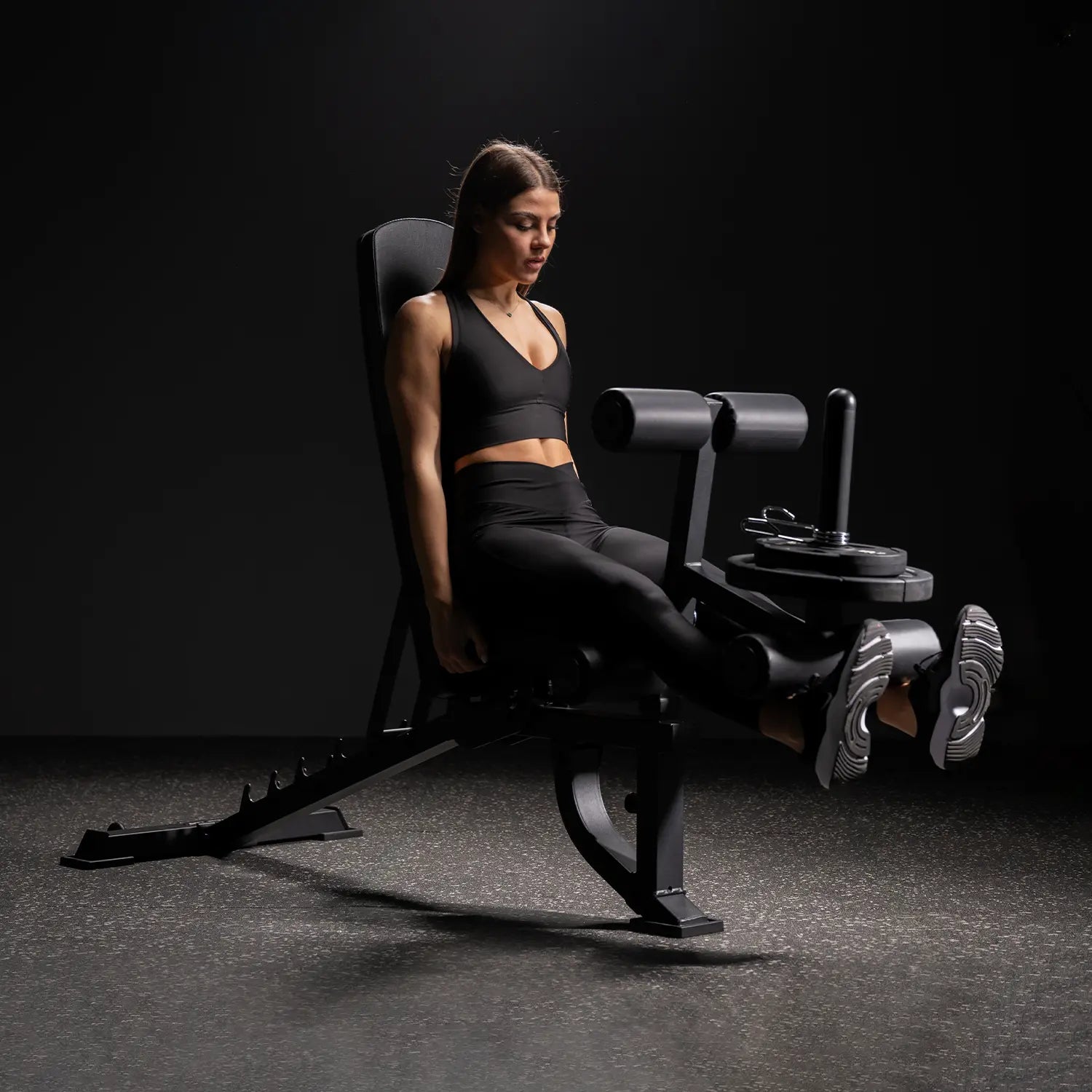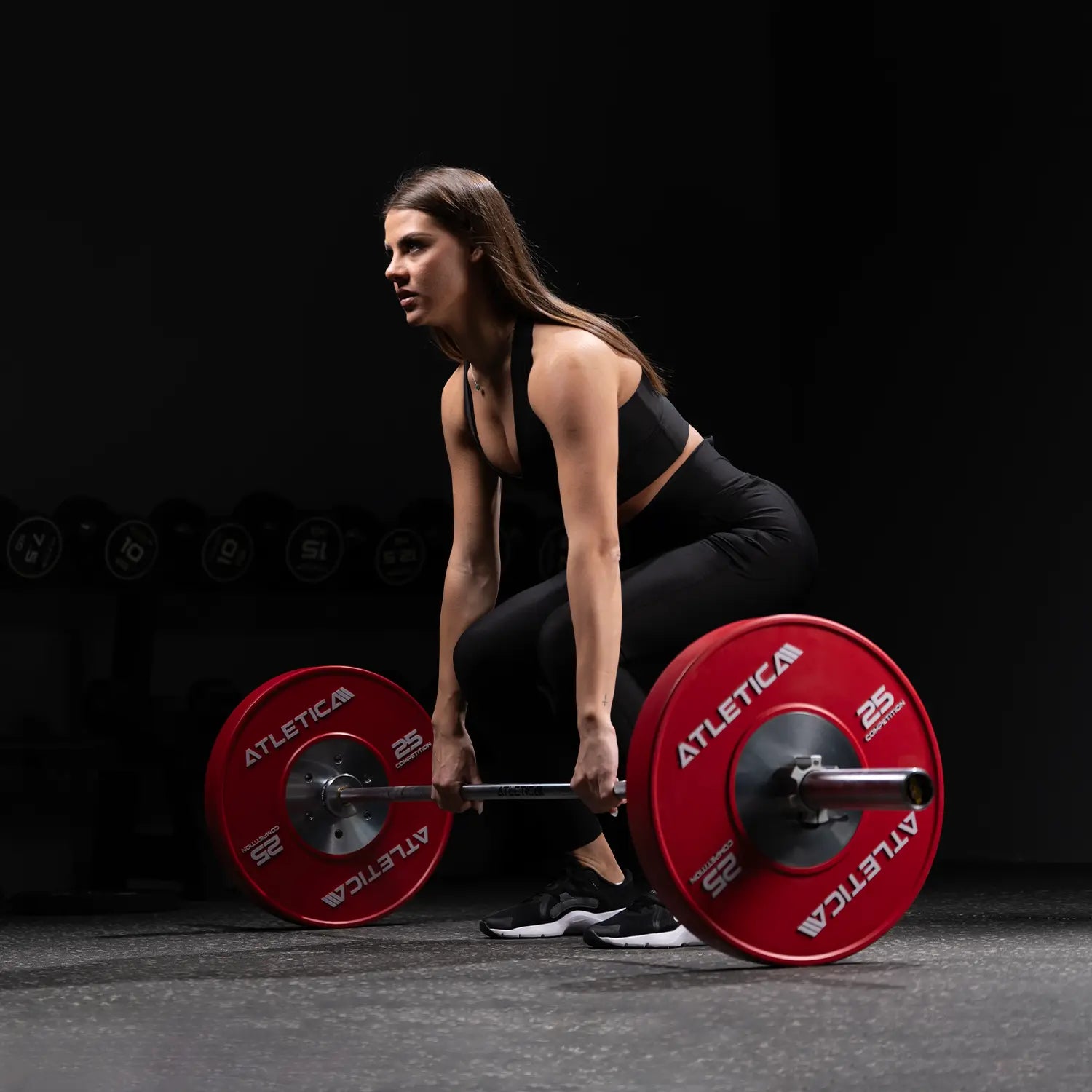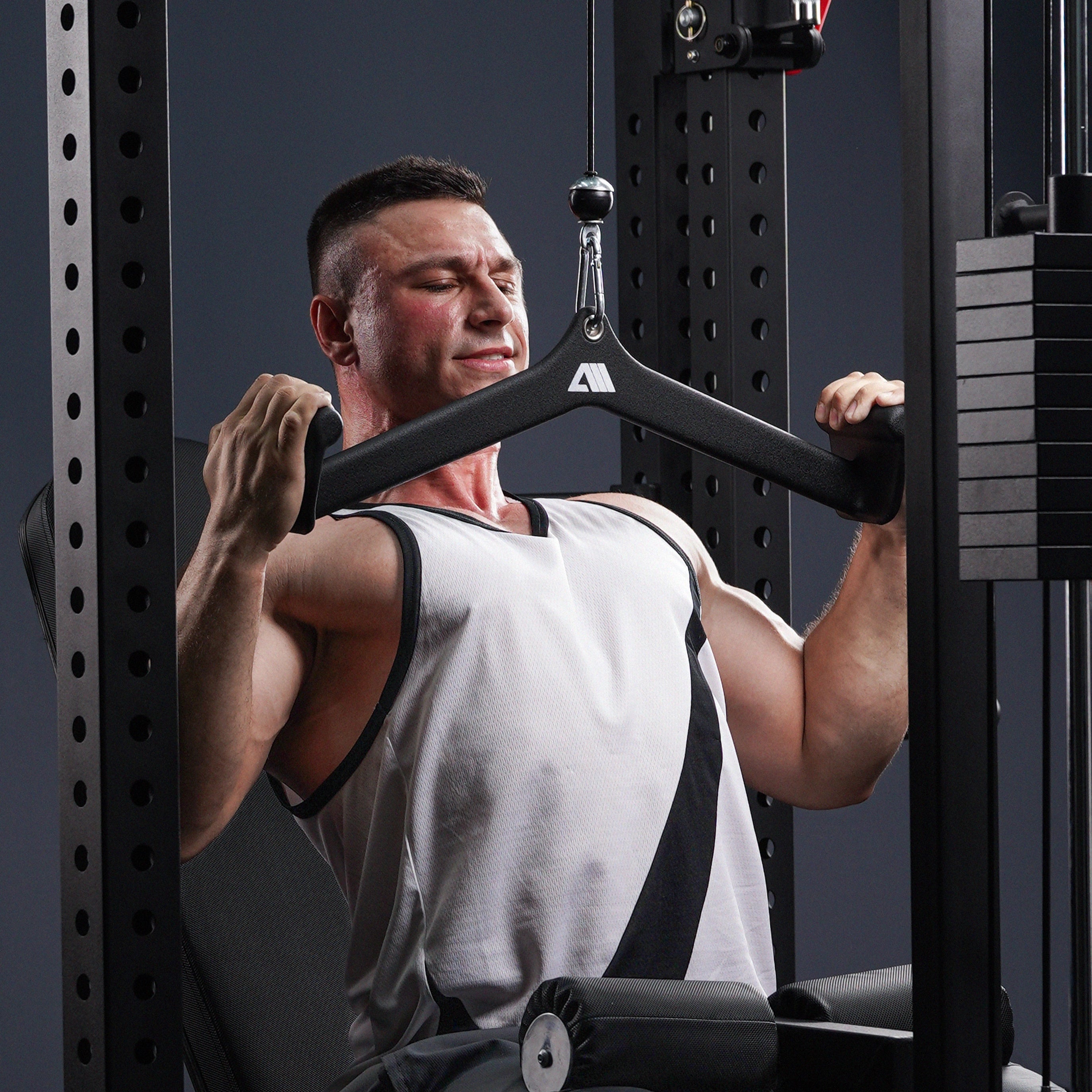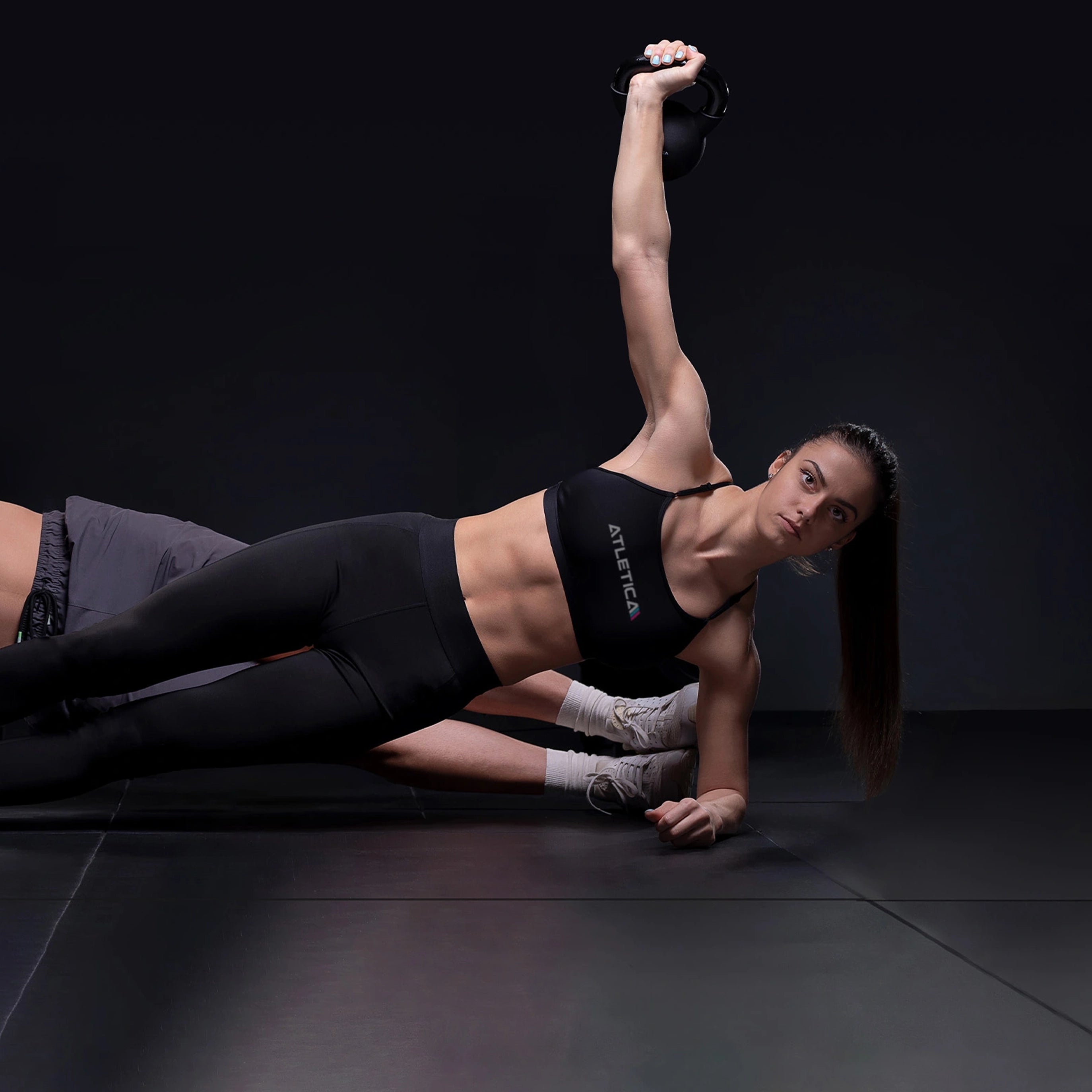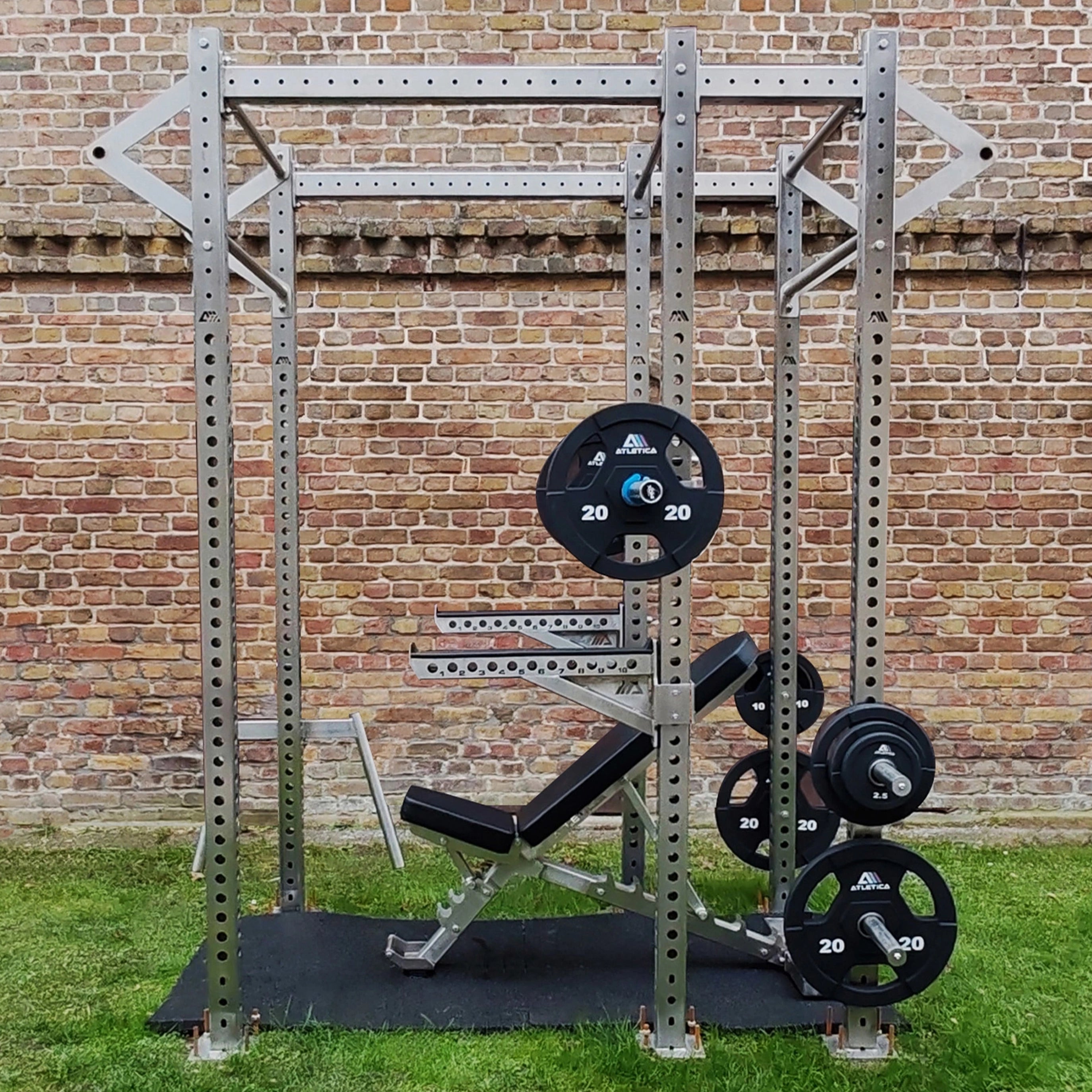The latissimus dorsi – or lat for short – is the largest muscle in the back and creates the typical V-shape that many fitness athletes strive for. A strong lat not only improves your appearance but also supports your posture, relieves pressure on the spine, and protects against back pain. In this article, we present the 10 most effective exercises you can use to train your latissimus dorsi – both at home and in the gym. We'll also show you which Atletica training equipment is particularly helpful and how you can make your training varied and effective.

Why you should train your latissimus
A strong latissimus not only ensures an aesthetic appearance. It also performs key functions in the back muscles, supports your posture , helps with everyday movements like lifting, pulling, or carrying, and protects you from muscular imbalances. Targeted back training can prevent discomfort or reduce existing tension, especially for those who sit a lot.
A trained latissimus also contributes to overall upper body strength, supports the shoulders and improves your performance in other exercises such as bench presses , deadlifts or shoulder presses.
1. Pull-ups – The classic for the lats
Pull- ups are one of the most effective exercises for training your latissimus dorsi. This movement requires strong back muscles and can target different areas depending on the grip width. A wide grip activates the outer lats more , while a narrow grip also engages the biceps and chest muscles.
For beginners, resistance bands or a pull-up aid like the Atletica Power Rack with pull-up bar are helpful. Advanced users can work with additional weights.
2. Lat pulldown on the cable machine
The lat pulldown is the ideal alternative to pull- ups — especially for beginners or those who want to refine their technique. The weight can be precisely adjusted, allowing you to load your muscles in a controlled and progressive manner. Different grip styles ensure you train the lats from different angles.
The Atletica cable pull system is versatile and offers you both lat and rowing options.

3. Bent-over barbell row
This basic exercise belongs in every back workout. With the correct technique, you'll work your lats, trapezius muscles, and rhomboids simultaneously. Make sure you maintain a firm stance, keep your back straight, and perform your movements slowly.
The Atletica barbell in combination with the matching weight plates guarantees you optimal training conditions.
4. One-arm dumbbell row
An excellent isolation exercise for the lats that also activates the core muscles through unilateral loading. All you need is a dumbbell and a sturdy bench or box.
Make sure your back stays straight and you perform the movement in a controlled manner – this will maximize muscle activation.
5. Cable rowing
Close-grip seated rowing is an excellent way to target your lats while being gentle on your joints. This exercise is especially suitable for beginners or those looking to improve their technique.
Use the Atletica cable pull machine for even loading and a variety of grip variations.

6. T-Bar Rowing
T-bar rowing is a powerful, close-grip exercise ideal for strengthening the deep back muscles . For optimal performance , we recommend using a rowing lever attachment, such as the one included in the Atletica Power Rack Set.
This exercise allows you to move a lot of weight and thus specifically gain muscle mass and strength.
7. Pullovers with dumbbells
This exercise is a real insider tip for lat activation. It's often used in chest training, but it also works hard on the latissimus dorsi — especially when stretching. You lie flat on a bench, hold the dumbbell above your head , and lower it behind your head with your arms straight.
Important: Consciously target the lat and do not let the triceps take over the movement.
8. Negative pull- ups
This variation is particularly suitable for beginners or for increasing maximum strength. You assume the upper pull-up position – e.g., chin-up. B. by jumping or over a bench – and then let yourself down slowly and in a controlled manner.
The eccentric part of the movement puts a lot of strain on the lats and prepares you for full repetitions.

9. Resistance Band Lat Pulldown
Resistance bands are ideal for training at home without much equipment. With a resistance band and a sturdy attachment (e.g., B. a pull-up bar) you can simulate lat pull-down movements.
The intensity can be varied depending on the band's strength . Perfect for on the go, while traveling, or as a supplement to your gym session.
10. Lat rows on the multi press
This rowing variation is particularly safe and controlled. The guided movement of the multi-press reduces the risk of injury and is suitable for anyone who wants to develop technique and muscle awareness .
The Atletica multi-presses are ideal for this exercise and offer many other training options for chest, legs and shoulders.
Training plan tip: How to integrate lat exercises sensibly
To build muscle, you should plan 2-3 lat exercises per session, ideally 1-2 times per week. Combine compound exercises (e.g., B. pull- ups , barbell rowing) with isolation exercises (e.g. B. Pullovers, cable pull) and pay attention to progressive loading – i.e. increasing the weight or the number of repetitions over time.
An example workout:
- Pull- ups : 3 sets of 8 repetitions
- Lat pulldown : 3 sets of 10 repetitions
- Dumbbell rows : 3 sets of 12 repetitions per side

Conclusion: How to train your latissimus effectively
The latissimus dorsi can be specifically trained with a variety of exercises – whether you're a beginner or advanced. Good technique, variation, and regular training are key. With the right equipment , such as a power rack , cable pulley, or multi-press from Atletica, you'll get the most out of your back training. Start now and strengthen your back for the long term.


